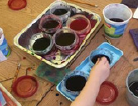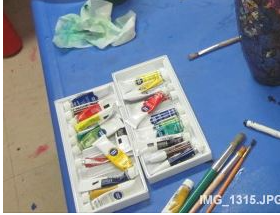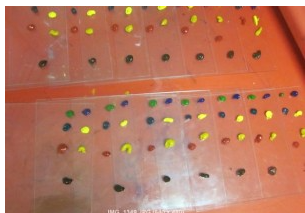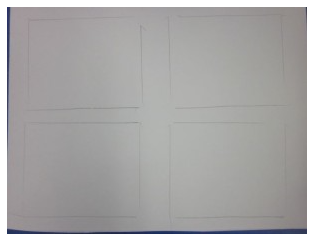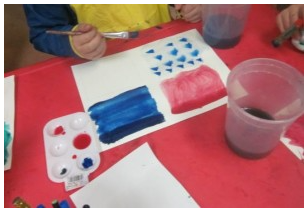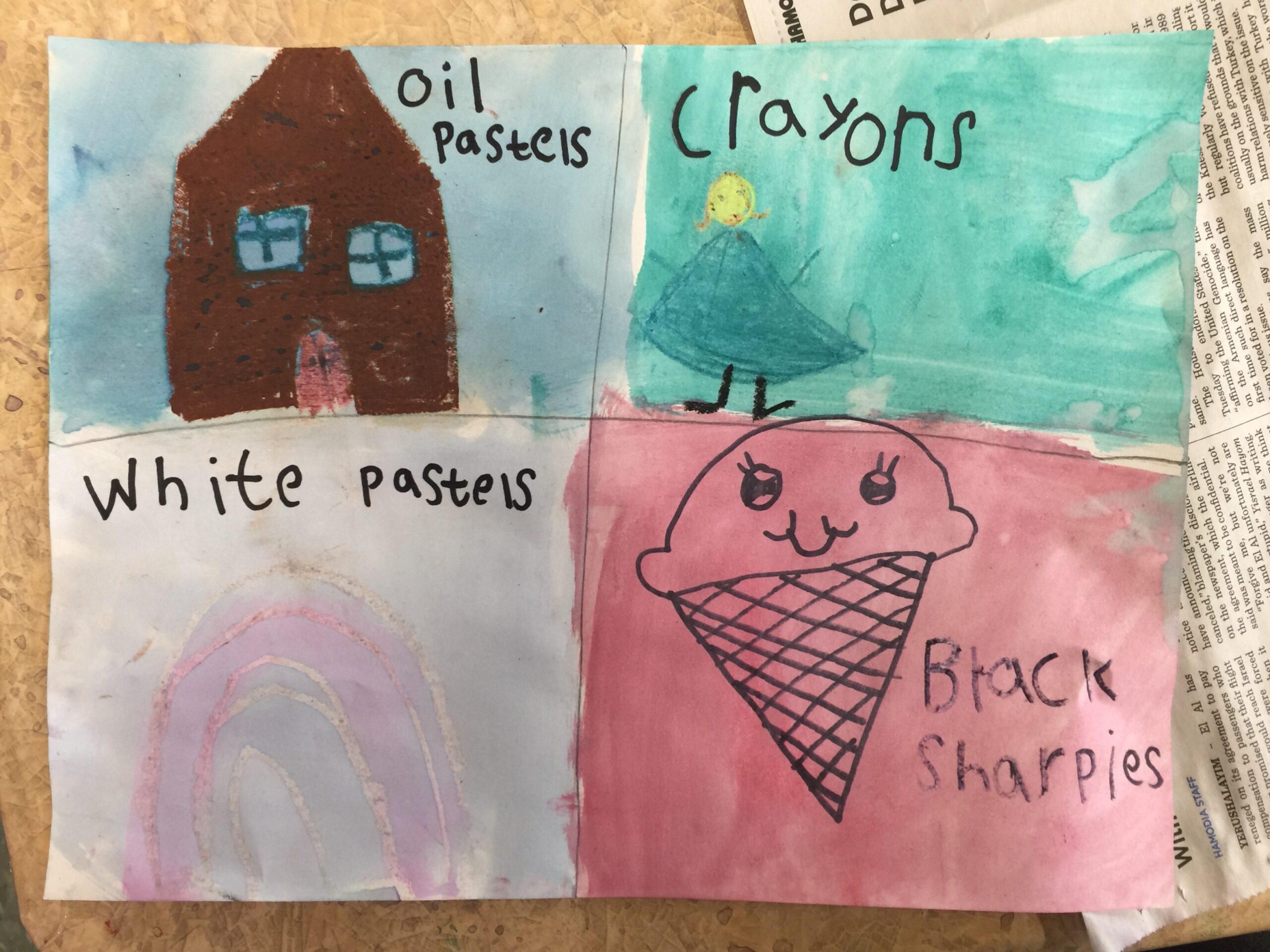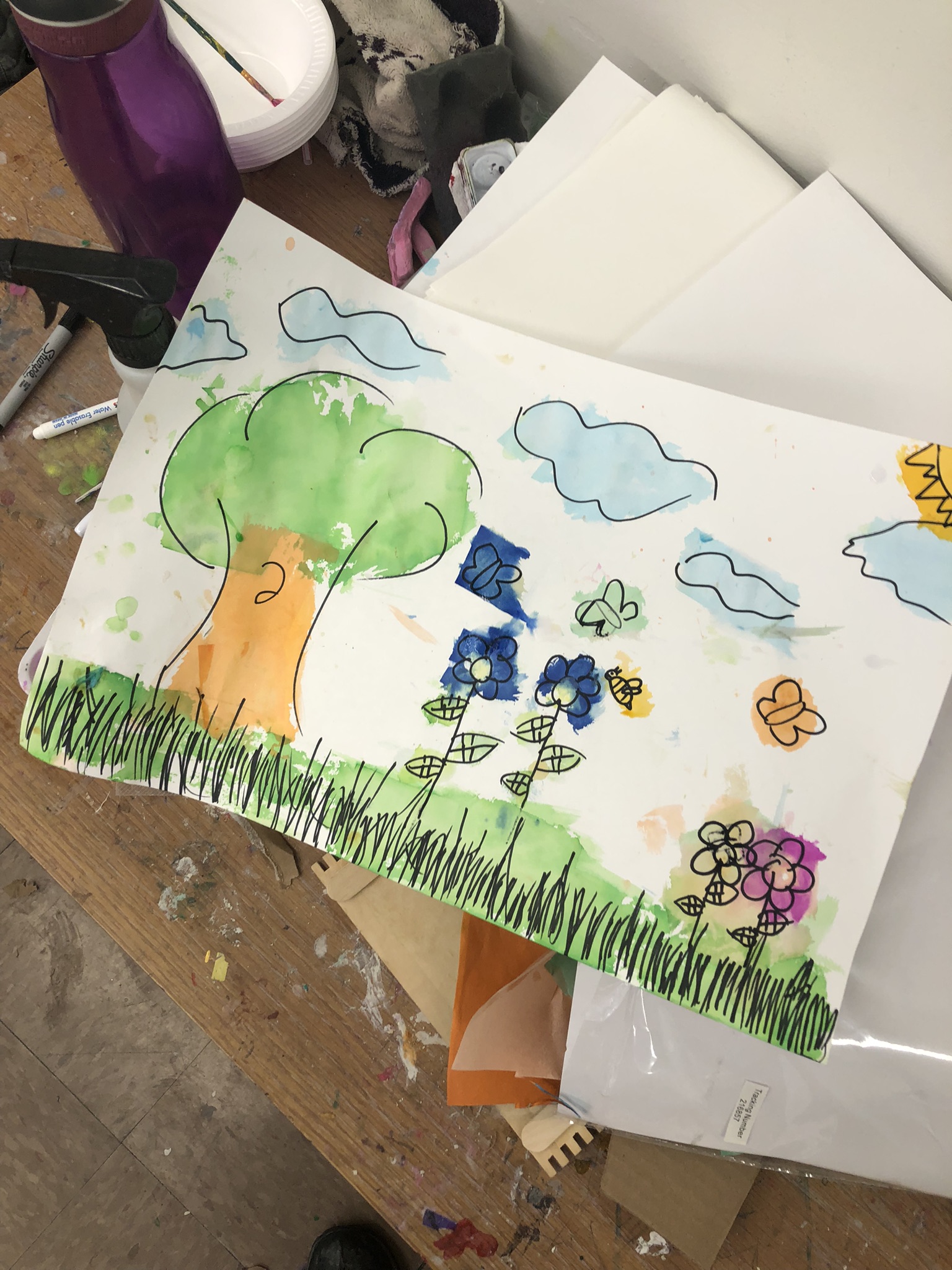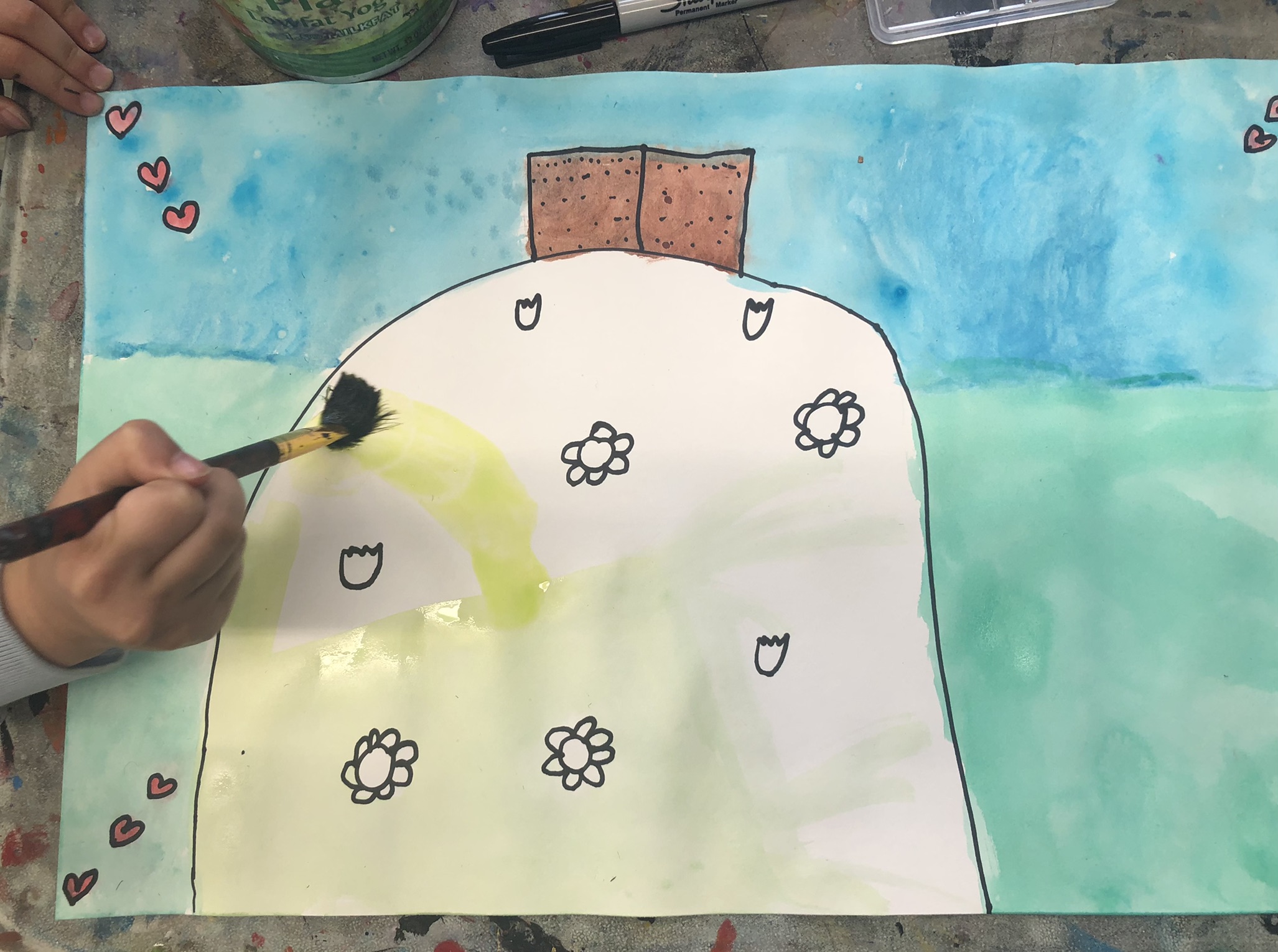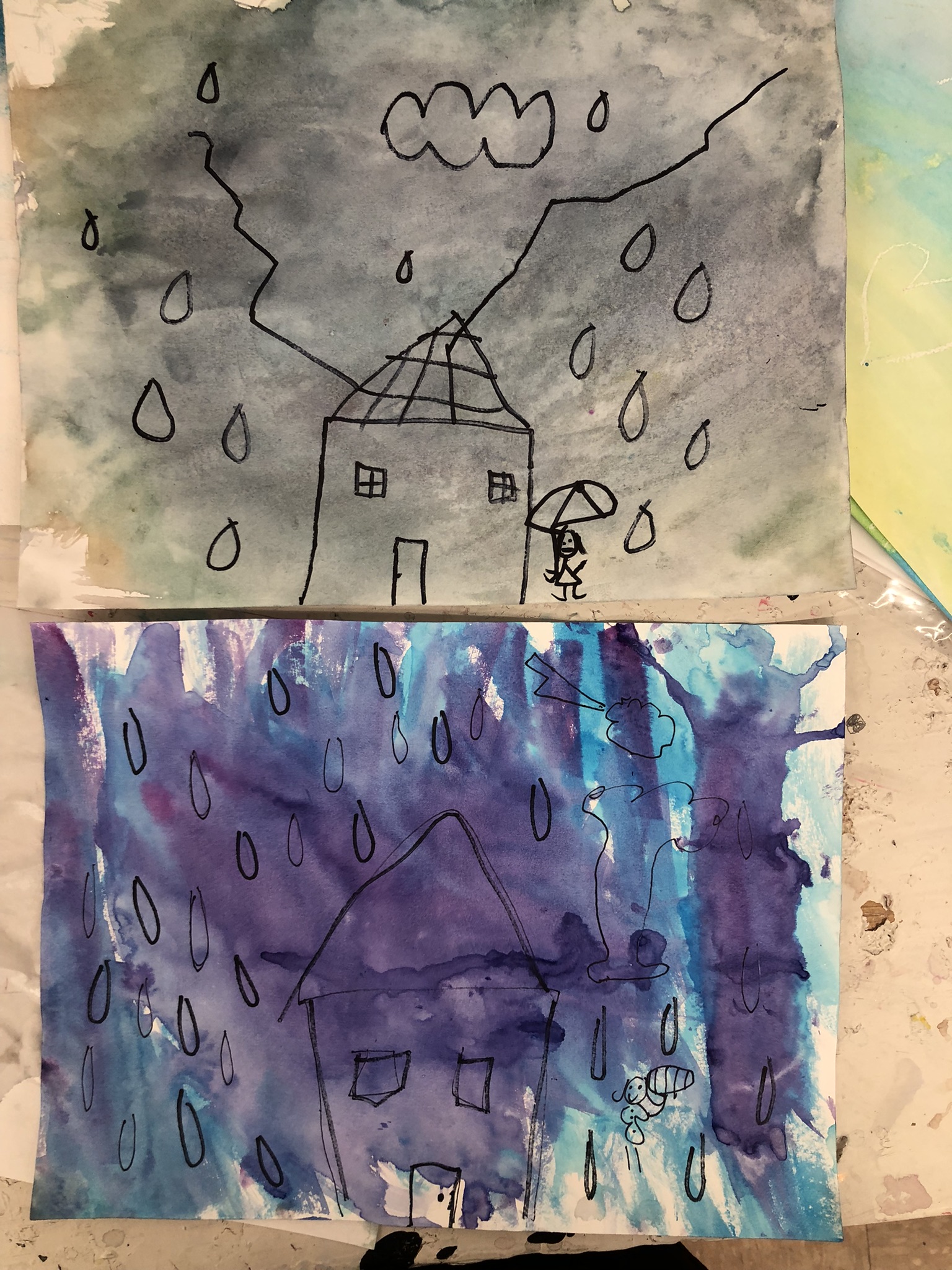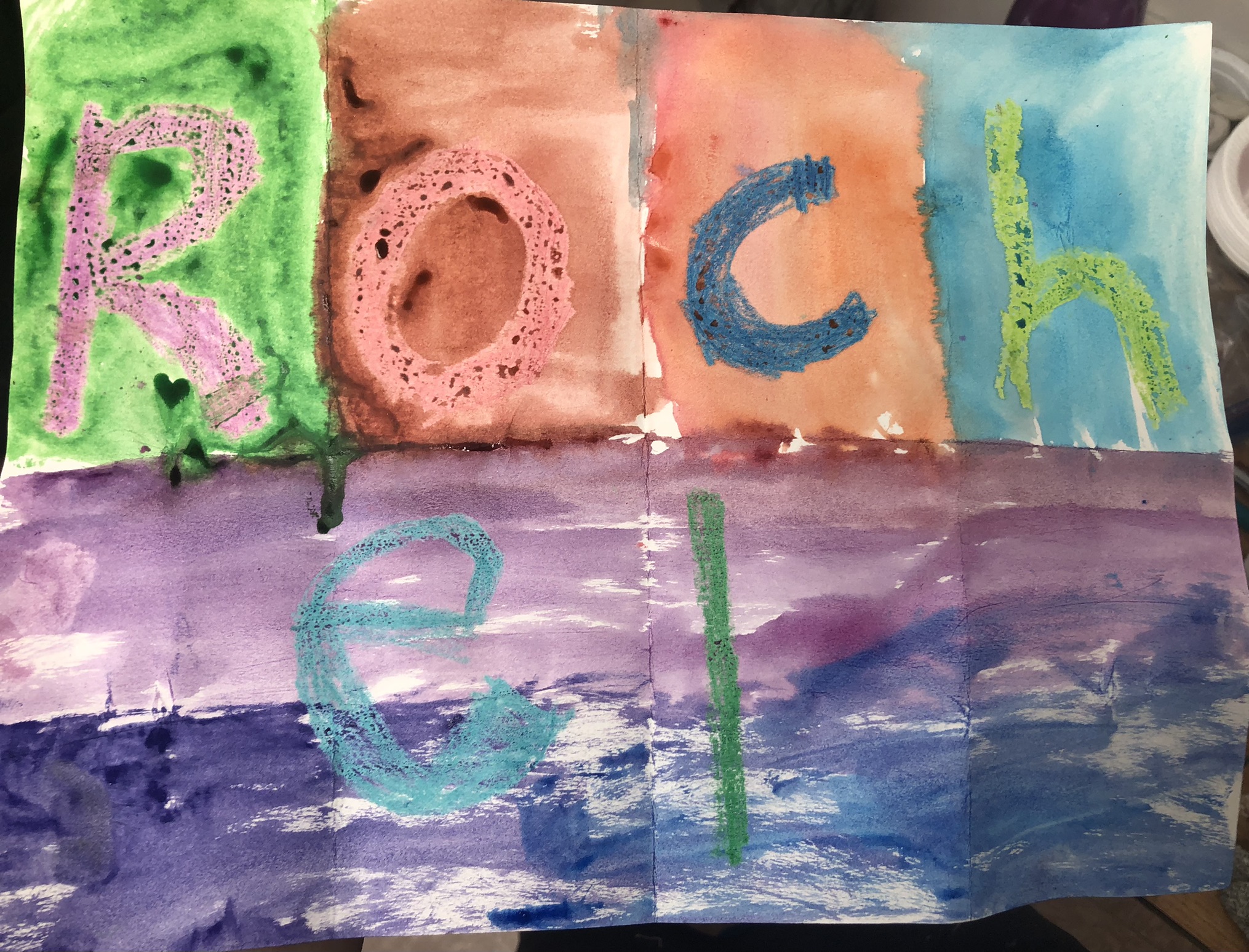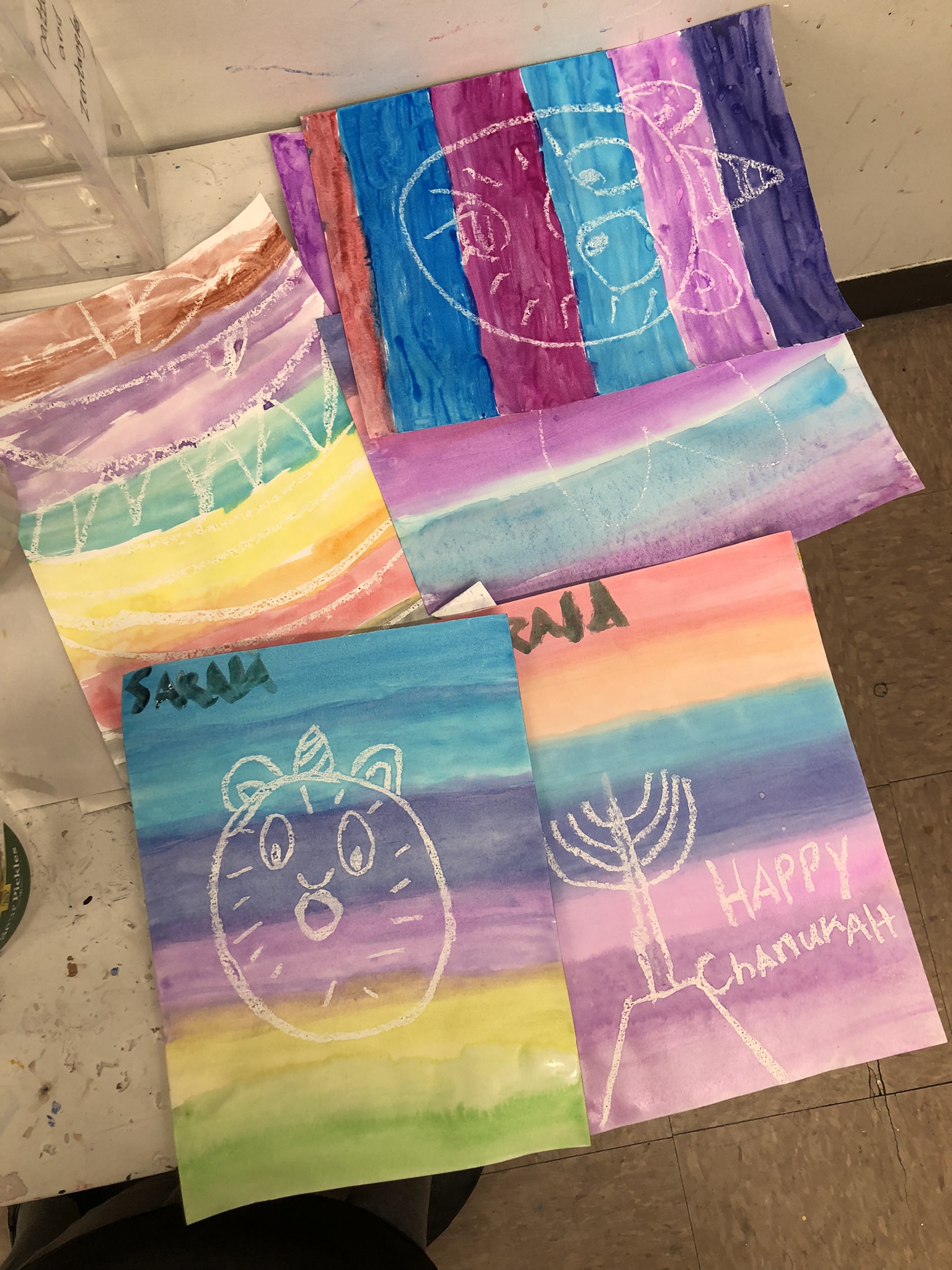Watercolors are very different than regular tempera painting. Teaching children basic watercolor painting just means to teach them the basic watercolor techniques and then to let them explore on their own.
There are three basic types of watercolors. The first is the most common, popular children's pan watercolors. In the past I have used Prang Watercolor Set as I found them very rich and vibrant but, if you are more cost conscious then you can't go wrong with this 16 color set from Crayola. Crayola with 16 colors.
I have found them to be quite vibrant. Be aware that the blues get used up very quickly but, you reorder just individual pans of color.
Crayola does have the sets with 8 colors but, I find it worth it to have the 16 set.
The second type of watercolors available are liquid watercolors. I have used two kinds. I have used Blicks but, lately have started using colorations.
One of the reasons I have started using colorations is because of the tiny hole they have to allow the paint to come out. I find that much easier to control.
Sometimes the liquid watercolors are super saturated and they last longer if you dilute them a bit with water. I have been putting them into reusable containers and adding water to them as needed. Be careful not to add too much water as the color then gets very light.
A third interesting way of using watercolors is by using tubes.
There are many types of tube paints but the ones above are a bunch of the Reeves Water Color Paint Set.
There are two ways to use tube watercolors. Either you use them directly from the tube which makes for very intense color . (This way as they get used up very fast so I don't use them this way with kids)
Another way to use them is to squeeze them out one color at a time either onto a piece of plexiglass as seen below or as I have done into an empty egg carton. (Styrofoam)
A Basic Watercolor lesson
Once you decide which watercolors you will use you need to teach them the basic watercolor technique (with pans and dried out tube paints)
Introduction to watercolors means that they must learn that they need to wake up their paints to get them onto the brush.
Some teachers use a spray bottle to spray the paints to make them wet and able to use. Other just give a container of water and a brush and show the children how to make their paintbrush wet and then use the wet brush to pick up paint from the pan (or the dried out paints from the tubes).
It's important to teach the children not to smash their brushes onto the paint as they get ruined easily.
Using watercolors straight from the tube gives rich vibrant color and is good just to show them how that works.
Many professional artists use the tubes as a way to prepare paints for painting and they usually do dry them out first.
To teach the children some watercolor techniques in a more structured way I would give them a watercolor paper with 4 boxes drawn on it. (or just divide the paper in four).
Watercolor paper is perfect as it absorbs the paints well. The paper that I linked to is 140lb. The higher the number the more absorbent and 300lb is way too much for children.
You can really use regular paper or tagboard as well if the children are very young and won't appreciate the more absorbent paper (and it is way more expensive)
This idea is to familiarize them with this type of paint as it is different from the tempera they have used.
In box number one I would let them use full strength tube paints (if you have). In box number two I would give them the pan watercolors. Box number three I would let them use dried out tube paints and in box number four I would instruct them to wet the paper first with their brush and see how the paint reacts on wet paper.
That technique is called "wet on wet"
Below is another way to teach watercolor techniques.
When you use crayons or pastels on the paper first and then paint over it, the crayon/pastels act as a resist and the paints go right over it allowing the color to come through.
If you do it with a white crayon/pastel then it's a bit magical as the picture comes through when you paint over it.
Black sharpies have a nice sharp look when paired with watercolors and I often give children sharpies to use either before or after they paint.
Here are two examples of children who used the watercolor resist idea with crayons/pastels. The one on the left used colored pastels and on the right they used white.
Watercolor painting is another type of painting that teaches children the many different mediums they can use creatively. Of course, the age of the children will determine how many watercolor techniques you can actually use.



